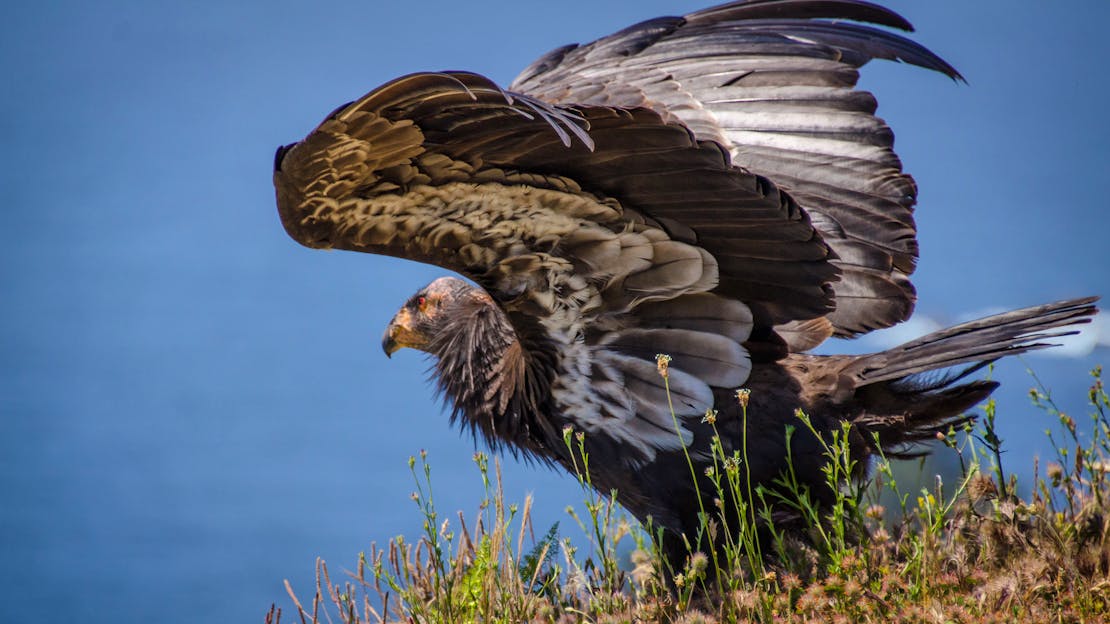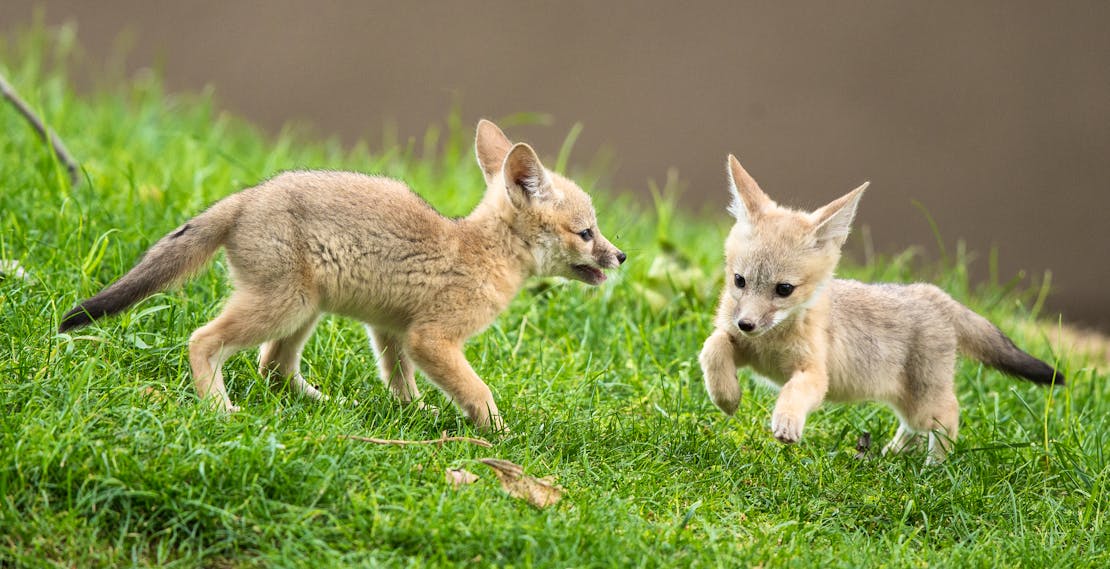By Denna Medrano, Andres Mejia and Ellie Riggs
Around the world, nearly 500 species have gone extinct in the past decade alone. Scientists expect the situation to become much worse, with predictions for species loss ranging from 200 to 10,000 species per year globally. In 2021, the ivory-billed woodpecker was one of 22 species of birds, fish, mussels and bats (and one plant) that the U.S. Fish and Wildlife Service proposed to remove from the Endangered Species Act (ESA) list due to extinction. Species* such as the Red Wolf, black-footed ferret and vaquita porpoise may be next.
While legislation like the ESA has forced greater protections of imperiled species—and even helped save animals like the bald eagle, humpback whale and American populations of the gray wolf—threats to these species and others remain. Increasing extinction rates are caused by unsustainable land use, habitat and biodiversity loss, pollution and climate change. As a result, nearly 1 million species face extinction in the coming decades. In this article, we highlight six animals on the brink of extinction and Defenders of Wildlife’s efforts to save them.
Red Wolf
Quick facts:
- ESA status: Endangered
- Remaining individuals in the wild: 20
- Threats: Poaching, vehicle collisions, hybridization and habitat loss
The smaller, thinner and redder cousin of the gray wolf, the Red Wolf is a uniquely “all-American” species, having a historic range confined within the boundaries of the lower 48 states. Over the years this range has shrunk considerably. The wolves have been eliminated from 99.7 percent of their territory, and the only remaining wild population is found in Northeast North Carolina.
Like many other carnivores, Red Wolves play a critical role in their ecosystems, serving as a check on prey populations that may otherwise grow out of control. The loss of carnivore species like the Red Wolf has already proven disastrous: Deer populations have increased dramatically across the Eastern United States, causing trouble for humans and animals as deer consume plants and spread disease-carrying ticks.
Since the 1960s, Defenders has recognized the importance of the Red Wolf through a series of advocacy and public education efforts. In 2016, we hired a team of field conservation staff to spread awareness about the wolves in North Carolina, and since engaged in lawsuits against the U.S. Fish and Wildlife Service and North Carolina Wildlife Resources Commission to force stronger protections for the endangered wolf. While the Red Wolf remains critically endangered, captive breeding programs and greater public support have managed to protect the species. This year, for the first time since 2018, a wild litter of Red Wolves was born giving new hope for recovery.
California Condor
Quick Facts:
- ESA status: Endangered
- Remaining individuals: < 600
- Threats: Lead poisoning, microtrash ingestion, habitat destruction from housing developments and oil and gas drilling, and predation
Using its impressive 9-foot wingspan, the California condor is capable of soaring for hours without flapping its wings, riding on air currents as it searches for dead cattle, deer and other animals. While the condor once inhabited a range stretching from British Colombia to Northwestern Mexico—and even flew over Texas, Florida and New York thousands of years ago—the bird is now restricted to California, Arizona, southern Utah and Baja California.
As a scavenger, condors are crucial to their home ecosystems, serving as “cleaners” who consume deceased animals. Without condors, dead animal carcasses would take longer to decompose, potentially spreading disease and harming the ecosystem as a whole.
Despite captive breeding programs, greater public education and efforts from groups like Defenders, the California condor remains a critically endangered species. To help protect the California condor and the many other species affected by waste, we encourage hunters to use lead free, non-toxic ammunition and adopt “Leave No Trace” ethics when enjoying the outdoors. Defenders has also worked with companies, government agencies and other partners to develop non-invasive alternative energy projects, which would protect the habitat of California condors and other imperiled species.
San Joaquin Kit Fox
Quick Facts:
- ESA status: Endangered
- Remaining individuals: < 7,000
- Threats: Climate change, disease, pesticides, oil leasing, habitat destruction and decrease in prey
The San Joaquin kit fox is a type of kit fox, the smallest fox species in North America, and an umbrella species in its ecosystem; protecting the fox indirectly protects neighboring species. Historically, San Joaquin kit foxes lived throughout San Joaquin Valley in California, inhabiting grasslands, scrublands, wetlands and adjacent habitats. Now, their habitat is fragmented, and San Joaquin kit foxes often have no choice but to live in urban and agricultural areas. The biggest threat to the fox is the poisoning and decline of prey populations, with increased pesticide use contaminating small animals and the foxes who eat them.
Though the San Joaquin kit fox is listed as endangered under the ESA, the U.S. Fish and Wildlife Service has yet to designate critical habitat—the area necessary for the recovery of a species—for the fox. To stop their extinction, Defenders is working to protect the foxes’ habitat of native grasslands and restore 13 million acres of rangelands in the Central Valley—1 million of which would be important San Joaquin kit fox habitat. Protecting the fox would greatly benefit other species sharing their ecosystem, but with less than 7,000 San Joaquin kit foxes left in the wild, we must act now.
North Atlantic Right Whale
Quick Facts:
- ESA status: Endangered
- Remaining individuals: < 350
- Threats: Ship strikes, fishing gear entanglements, offshore energy exploration and development, and ocean noise pollution
North Atlantic right whales are one of the most endangered large whale species in the world due to commercial whaling, which decimated the species by the early 1900s. These marine mammals are distributed along the eastern seaboard from Canada to South Carolina, Georgia and Florida, where vessel traffic, fishing ropes and ocean noise pollution threaten their reproduction and survival.
In what’s known as the “whale pump,” right whales and other large whales feeding at depth and eliminating at the surface redistribute nutrients to help keep marine ecosystems healthy. These nutrients are essential for the growth of phytoplankton, marine plants that perform important tasks in oceans like creating oxygen, holding carbon and serving as the base of the marine food web.
To protect these whales, Defenders is building support in Congress to enact the Right Whale Coexistence Act of 2022. This bill would authorize a decade of funding of research and conservation efforts to find innovative technological solutions to enable fishing and vessels to safely coexist with large whales. Defenders and our conservation allies are engaged in long-running litigation and legal advocacy to ensure the National Marine Fisheries Service complies with its obligations under the ESA and the Marine Mammal Protection Act to protect right whales from entanglements in the American lobster and other fisheries. In 2020, Defenders and our allies petitioned the Service to expand the 2008 vessel speed rule that sets “slow down zones” near busy shipping ports along the Eastern Seaboard, and have gone to court challenging the agency’s unreasonable delay in acting on this petition.
Florida Panther
Quick Facts:
- ESA status: Endangered
- Remaining individuals: 120-230 adults in south Florida
- Threats: Habitat loss and fragmentation, roadway mortality, lack of landowner acceptance, genetic problems and disease
The Florida panther is the only puma population remaining east of the Mississippi and one of the most endangered mammals in the United States. Because of habitat degradation—beginning with European settlers in the 1600s and overhunting that lasted until the 1950s—the species now occupies less than five percent of its historic range. While habitat loss, territory fragmentation and direct persecution originally contributed to decreasing panther populations, today vehicle collisions are the greatest human source of mortality to the Florida panther, accounting for 18 deaths so far in 2022. Losing dozens of panthers on roads each year makes it harder for the small panther population to expand its range.
Florida panthers are an umbrella species. Therefore, protecting them and large wild areas they need to survive helps conserve many other animals and plants that share its ecosystem. As carnivores, Florida panthers also regulate the food chain by keeping hog, deer, raccoon and other prey populations in check.
Defenders has helped the Florida panther population make steady progress under the ESA for nearly five decades. We are working to foster a greater understanding on panthers and their importance to ecosystems where they occur and to help people share the landscape with these endangered mammals. Along with panther coexistence programs, conservationists are working to protect large areas of interconnected habitat and travel corridors and are advocating for construction of wildlife crossings and directional fencing along dangerous road segments so that Florida panthers can travel safely within their large home ranges.
Southern Resident Orca
Quick Facts:
- ESA status: Endangered
- Remaining individuals: 74
- Threats: Lack of prey, pollution and noise disturbance
Southern Resident orcas are a unique population of orcas found off the coasts of Washington, Oregon and British Columbia. The three remaining pods of Southern Resident orcas—known as J, K and L—are uniquely adapted to hunt salmon, especially Chinook salmon. However, due to declining salmon populations, Southern Resident orcas are slowly starving. These pods are also threatened by toxic pollution entering waterways through stormwater runoff, derelict structures and other avenues, as well as noise disturbance from vessels and other human sources that disrupt the orcas’ echolocation.
Orcas are an indicator species that can reveal hidden issues in marine ecosystems. They are also culturally significant to many of the Indigenous communities of the Pacific Northwest, especially those who live near the Salish Sea.
Defenders works to protect orcas and their critical habitat by preserving prey populations and improving water quality through legislation and public outreach. We advocate for the removal of four dams on the lower Snake River in Washington, which are driving salmon populations towards extinction by, among other issues, inhibiting their ability to migrate upstream to spawn and rear. This has dire consequences for the Southern Resident orcas, as well as the cultures and economies of several Native Nations in the Pacific Northwest. Defenders also launched a program that provides access to rain gardens, or gardens that absorb polluted runoff, and education on salmon and orcas to the community.
Conclusion
The sixth mass extinction is well underway, and the disappearance of thousands of species is imminent. Human irresponsibility and negligence threaten our planet and our ability to coexist with wildlife. Saving these species from extinction may seem impossible, yet there is still hope. More than 95 percent of species listed under the Endangered Species Act are still with us today and hundreds are on the path to recovery, an astonishing success rate.
This success is critically important in light of the current extinction crisis, which affects not just wildlife but also humanity. The accomplishments of the ESA, as well as that of Defenders, other conservation groups, government leaders, scientists and dedicated members of the public, demonstrate that these six animals can still be conserved. Together, we can work towards a future where they not only survive but thrive alongside us.
To join us in fighting extinction and the loss of critical biodiversity, please consider supporting us at https://defenders.org/support-our-work.
*Under the Endangered Species Act, subspecies and distinct population segments of vertebrates are considered “species” under the Act when listed. For the purposes of this blog post we refer to listed entities under the Act as species.













